
How to Use Adafruit WINC1500 PCB Antenna Breakout: Examples, Pinouts, and Specs
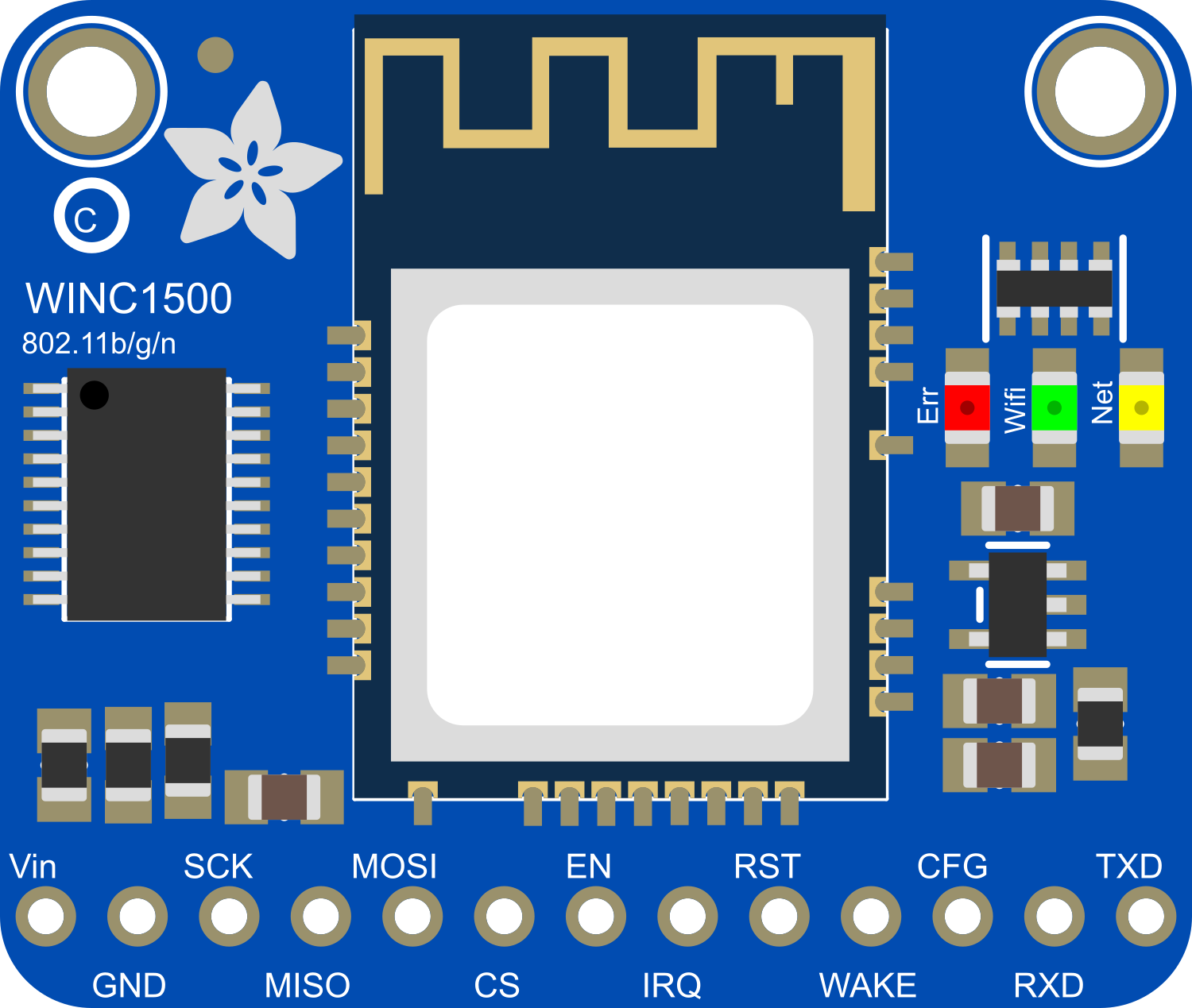
 Design with Adafruit WINC1500 PCB Antenna Breakout in Cirkit Designer
Design with Adafruit WINC1500 PCB Antenna Breakout in Cirkit DesignerIntroduction
The Adafruit WINC1500 PCB Antenna Breakout is a compact wireless network module that enables microcontrollers and microcomputers to connect to 802.11 b/g/n Wi-Fi networks. This breakout board integrates the Microchip WINC1500 Wi-Fi module, which is specifically designed for low-power Internet of Things (IoT) applications. The onboard PCB antenna makes this module a convenient choice for wireless data communication.
Explore Projects Built with Adafruit WINC1500 PCB Antenna Breakout
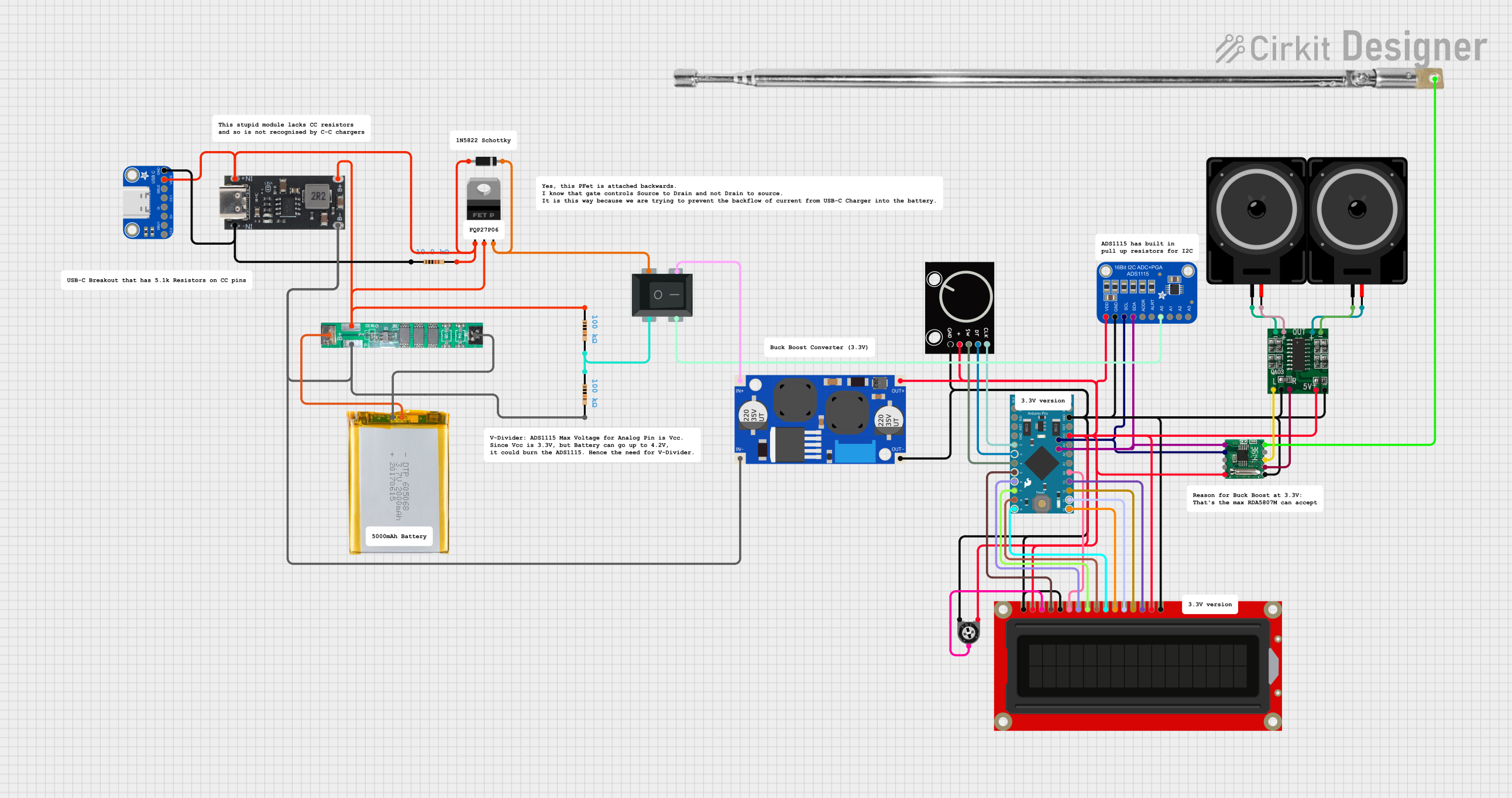
 Open Project in Cirkit Designer
Open Project in Cirkit Designer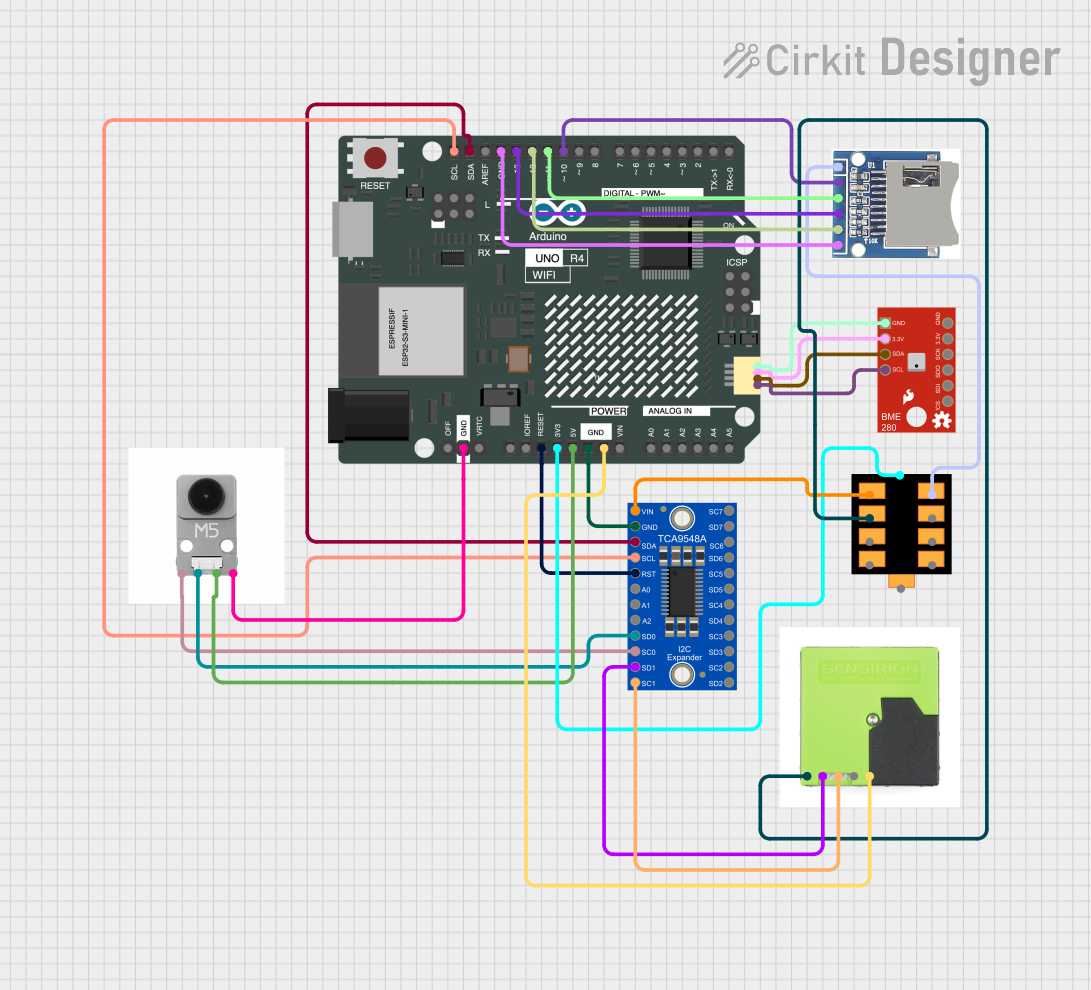
 Open Project in Cirkit Designer
Open Project in Cirkit Designer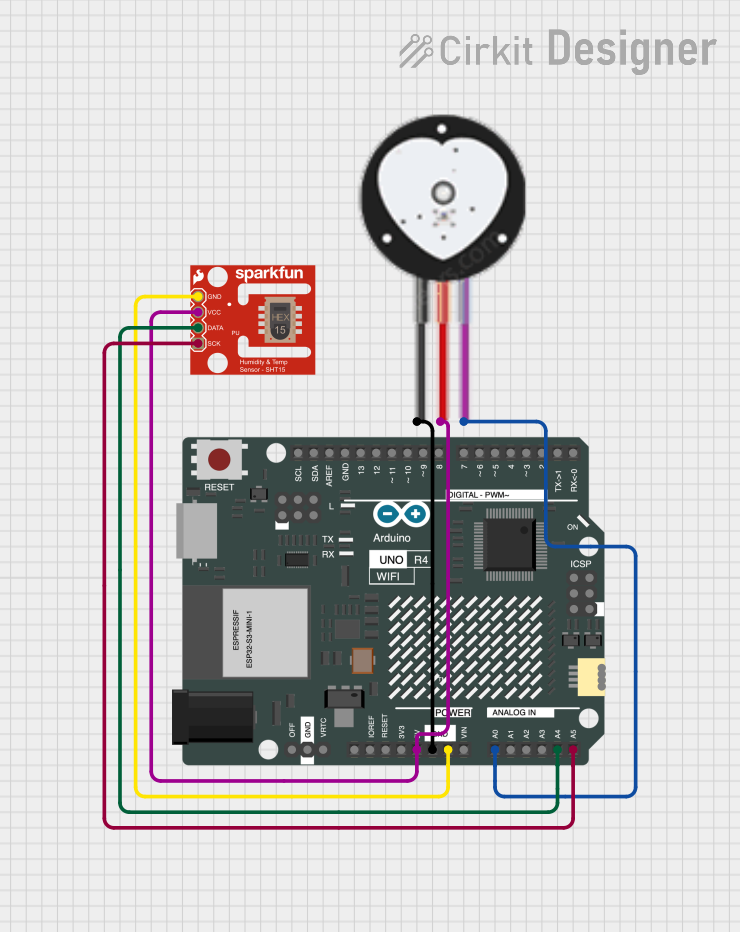
 Open Project in Cirkit Designer
Open Project in Cirkit Designer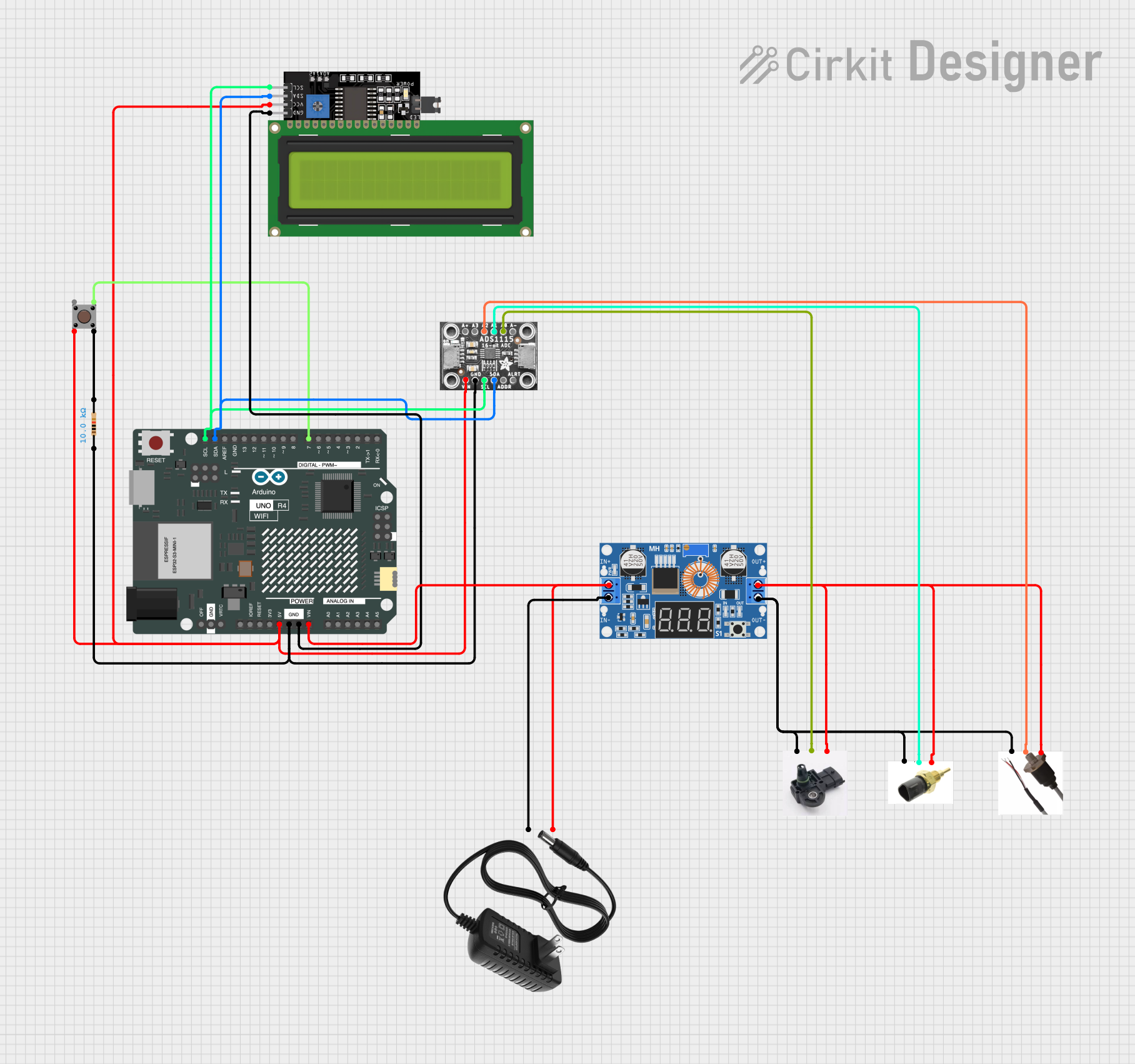
 Open Project in Cirkit Designer
Open Project in Cirkit DesignerExplore Projects Built with Adafruit WINC1500 PCB Antenna Breakout

 Open Project in Cirkit Designer
Open Project in Cirkit Designer
 Open Project in Cirkit Designer
Open Project in Cirkit Designer
 Open Project in Cirkit Designer
Open Project in Cirkit Designer
 Open Project in Cirkit Designer
Open Project in Cirkit DesignerCommon Applications and Use Cases
- IoT devices
- Remote sensor networks
- Wireless data loggers
- Home automation systems
- Robotics
Technical Specifications
Key Technical Details
- Wi-Fi Standards: 802.11 b/g/n
- Frequency Range: 2.4 GHz ISM Band
- Security Protocols: WEP, WPA/WPA2 PSK/Enterprise
- Integrated TCP/IP stack
- Power Supply: 3.3V
- Interface: SPI
- Operating Temperature: -40°C to +85°C
Pin Configuration and Descriptions
| Pin Number | Name | Description |
|---|---|---|
| 1 | GND | Ground |
| 2 | 3V3 | 3.3V Supply |
| 3 | EN | Enable Pin |
| 4 | RST | Reset Pin |
| 5 | SCK | SPI Clock |
| 6 | MISO | SPI MISO |
| 7 | MOSI | SPI MOSI |
| 8 | CS | SPI Chip Select |
| 9 | IRQ | Interrupt Request |
| 10 | WAKE | Wake-up Pin |
Usage Instructions
How to Use the Component in a Circuit
- Power Supply: Connect the 3V3 pin to a 3.3V power source and the GND pin to the ground.
- SPI Interface: Connect the SCK, MISO, MOSI, and CS pins to the corresponding SPI interface pins on your microcontroller.
- Control Pins: Connect the EN and RST pins to digital I/O pins on your microcontroller for enabling and resetting the module.
- Interrupts: Optionally, connect the IRQ pin to an interrupt-capable pin on your microcontroller to handle asynchronous events.
- Wake-up: The WAKE pin can be used to wake the module from sleep mode.
Important Considerations and Best Practices
- Ensure that the power supply is stable and clean to prevent any damage to the module.
- Use proper decoupling capacitors close to the module's power supply pins to minimize power supply noise.
- Keep the SPI lines as short as possible to reduce signal degradation.
- Follow proper ESD precautions when handling the breakout board to avoid damaging the sensitive Wi-Fi module.
Example Code for Arduino UNO
#include <SPI.h>
#include <WiFi101.h>
// Your network SSID and password
char ssid[] = "your_network_SSID";
char pass[] = "your_password";
void setup() {
Serial.begin(9600);
// Check for the presence of the shield
if (WiFi.status() == WL_NO_SHIELD) {
Serial.println("WiFi shield not present");
// Don't continue
while (true);
}
// Attempt to connect to WiFi network
while (WiFi.begin(ssid, pass) != WL_CONNECTED) {
Serial.print("Attempting to connect to SSID: ");
Serial.println(ssid);
// Wait 10 seconds before retrying
delay(10000);
}
Serial.println("Connected to wifi");
printWiFiStatus();
}
void loop() {
// Add your regular code here
}
void printWiFiStatus() {
// Print the SSID of the network you're attached to
Serial.print("SSID: ");
Serial.println(WiFi.SSID());
// Print your board's IP address
IPAddress ip = WiFi.localIP();
Serial.print("IP Address: ");
Serial.println(ip);
// Print the received signal strength
long rssi = WiFi.RSSI();
Serial.print("Signal strength (RSSI):");
Serial.print(rssi);
Serial.println(" dBm");
}
Troubleshooting and FAQs
Common Issues
- Module not responding: Ensure that the module is correctly powered and that the SPI connections are secure.
- Unable to connect to Wi-Fi: Verify that the SSID and password are correct and that the Wi-Fi network is within range.
- Intermittent connectivity: Check for sources of Wi-Fi interference or signal obstructions.
Solutions and Tips for Troubleshooting
- Reset the module using the RST pin if it becomes unresponsive.
- Use serial output to debug and verify that the module is initializing correctly.
- Ensure that the antenna area is not obstructed by metal objects or electronic components that could interfere with the signal.
FAQs
Q: Can the WINC1500 be used with a 5V microcontroller? A: Yes, but level shifters should be used on the SPI lines to protect the 3.3V logic of the WINC1500.
Q: Does the WINC1500 support over-the-air (OTA) updates? A: Yes, the WINC1500 supports OTA updates, which can be implemented through the provided library functions.
Q: How can I improve the range of the Wi-Fi connection? A: Ensure that the PCB antenna is not obstructed and consider the orientation of the breakout board for optimal signal reception. Additionally, external antennas can be used if the breakout board version supports it.